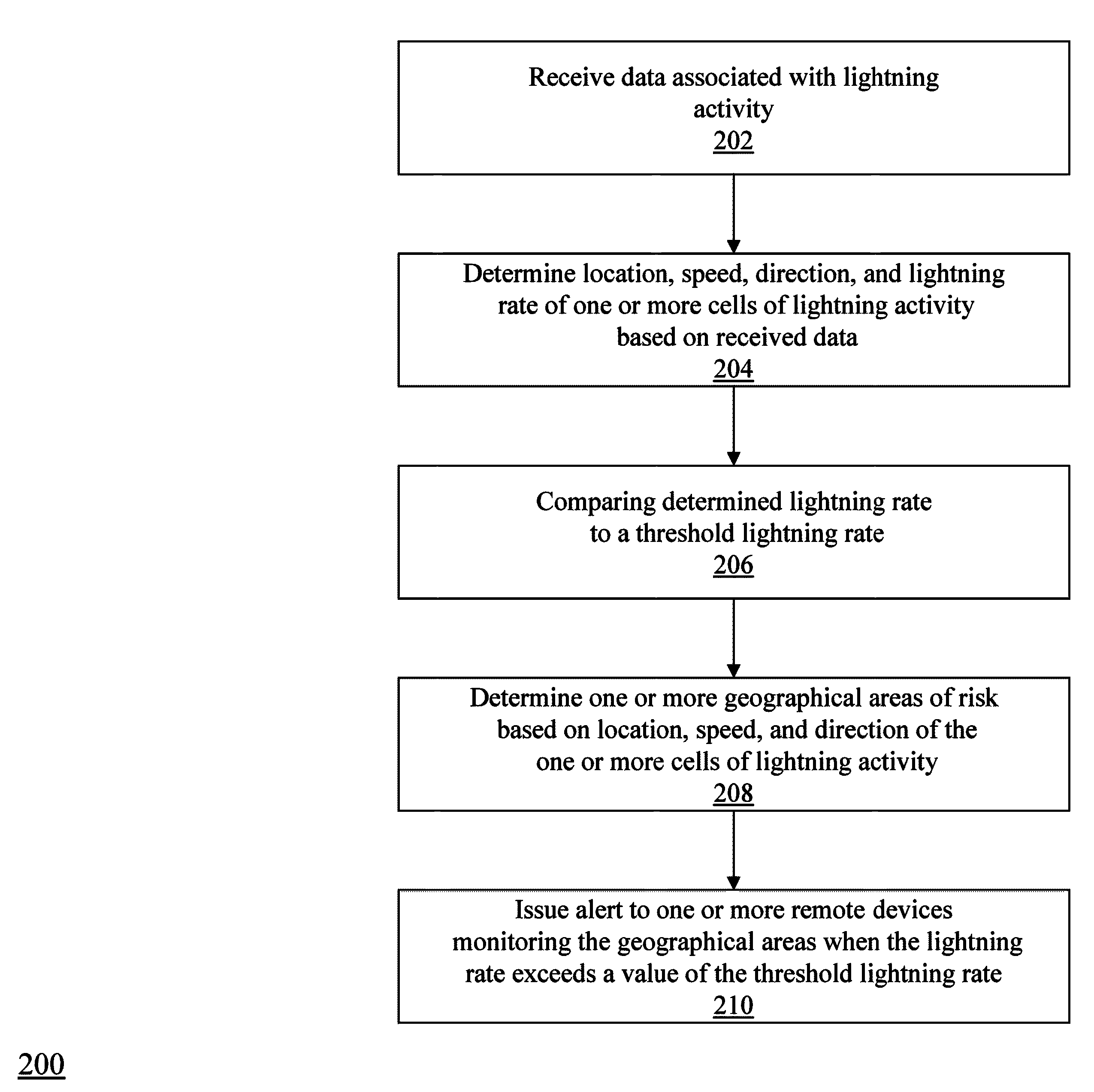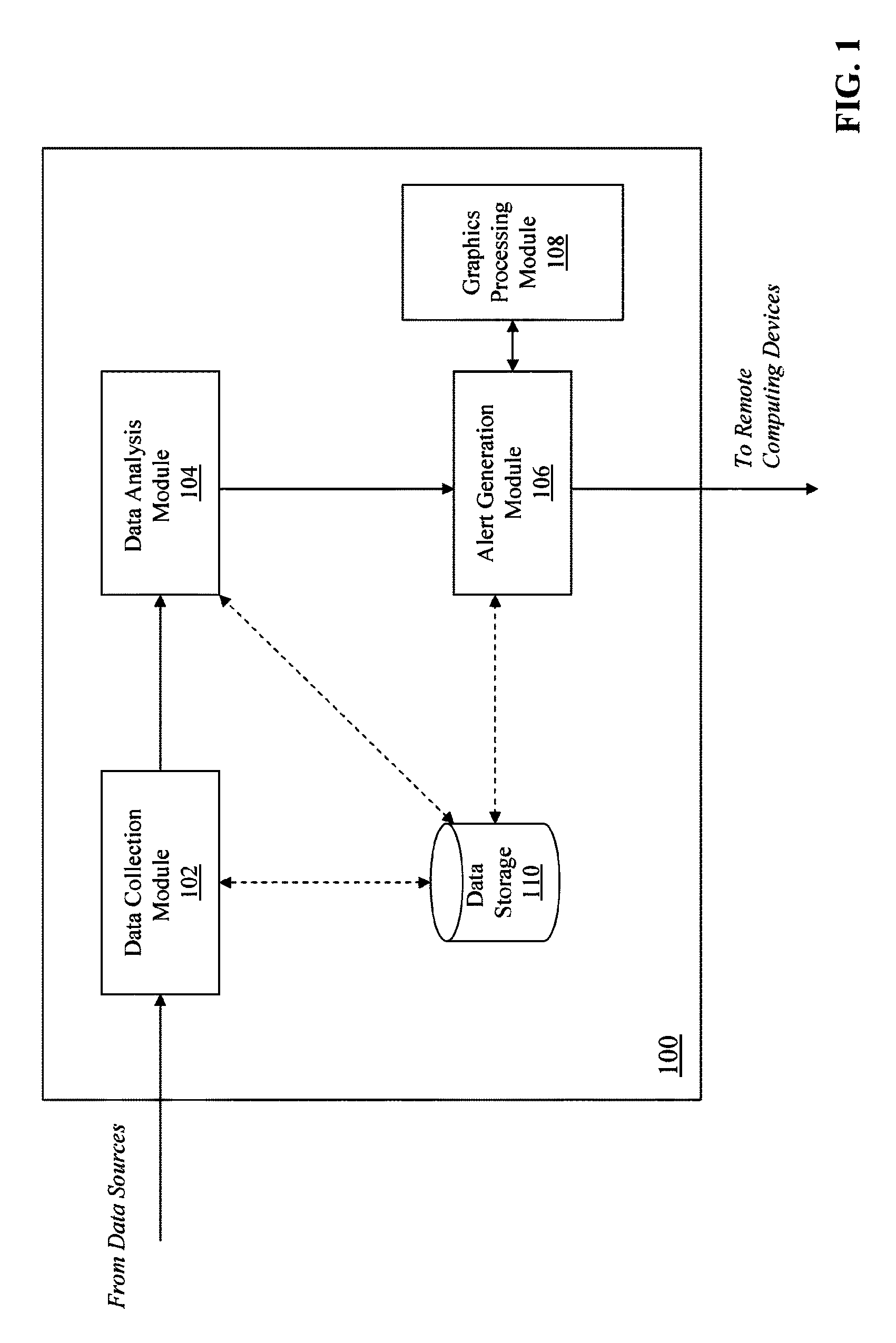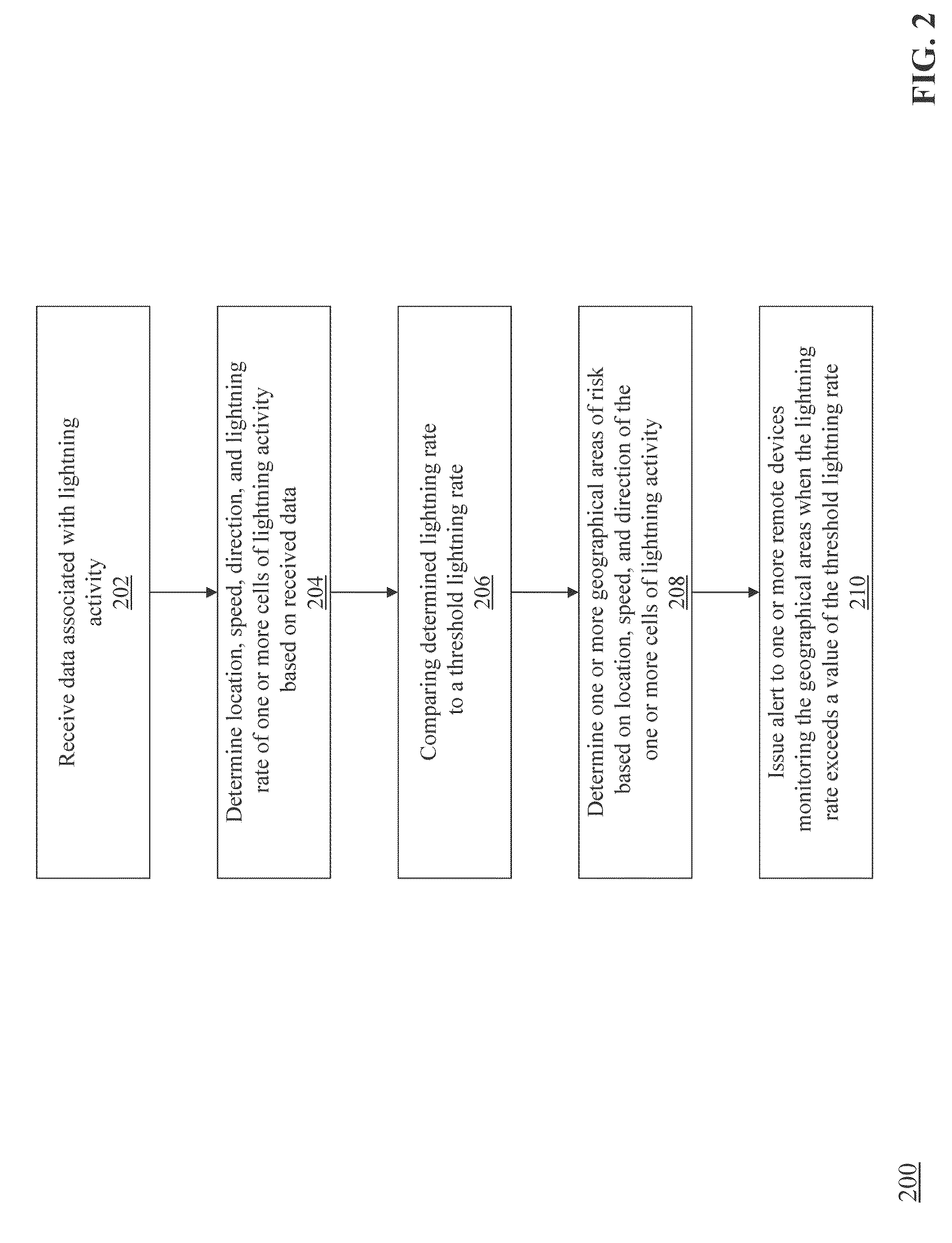Predicting the potential for severe weather
a weather and severe technology, applied in the field of forecasting the potential for severe weather, can solve problems such as lightening activity, and achieve the effects of reducing the risk of dangerous weather activity, and reducing the risk of lightening activity
- Summary
- Abstract
- Description
- Claims
- Application Information
AI Technical Summary
Benefits of technology
Problems solved by technology
Method used
Image
Examples
Embodiment Construction
[0023]FIG. 1 is a block diagram of a system 100 for predicting the potential for severe weather. The system 100 includes a data collection module 102, a data analysis module 104, an alert generation module 106, a graphics processing module 108, and a data storage module 110. In some embodiments, the components (e.g., 100, 102, 104, 106, 108 and 110) of the system 100 reside at the same physical location or may be dispersed to different physical locations. In some embodiments, the components of the system 100 are located on the same physical device (e.g., a server computing device), or are distributed on different physical devices. The components of the system 100 communicate, for example, via a communications network (e.g., WAN, LAN, VLAN).
[0024]FIG. 2 is a flow diagram of a method 200 for predicting the potential for severe weather using the system 100. The data collection module 102 receives (202) data associated with lightning activity. The data analysis module 104 determines (20...
PUM
 Login to View More
Login to View More Abstract
Description
Claims
Application Information
 Login to View More
Login to View More - R&D
- Intellectual Property
- Life Sciences
- Materials
- Tech Scout
- Unparalleled Data Quality
- Higher Quality Content
- 60% Fewer Hallucinations
Browse by: Latest US Patents, China's latest patents, Technical Efficacy Thesaurus, Application Domain, Technology Topic, Popular Technical Reports.
© 2025 PatSnap. All rights reserved.Legal|Privacy policy|Modern Slavery Act Transparency Statement|Sitemap|About US| Contact US: help@patsnap.com



